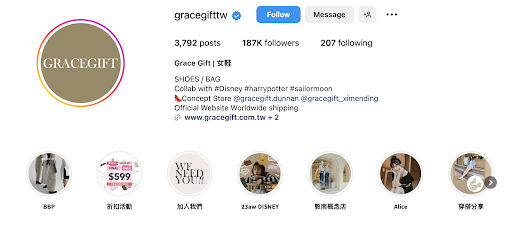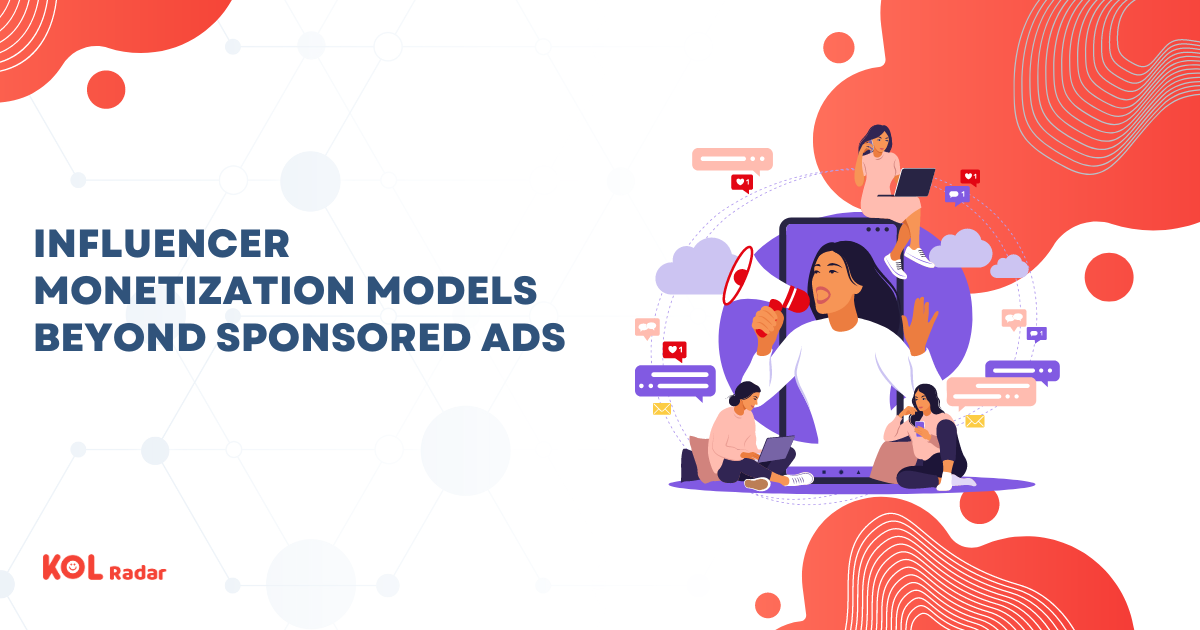According to the “2023 Influencer Marketing Trends Insight Report,” the number of influencers is gradually increasing. To establish their unique value, influencers are diversifying their approaches and moving beyond just collaborating on sponsored posts and appearing in videos. They are exploring various monetization methods such as creating their own brands, participating in product collaborations, and more. These diverse strategies help creators expand their opportunities for exposure. At the same time, brands can leverage the influence and appeal of influencers by partnering with them directly or with the influencers’ self-established brands. This synergy aims to achieve a greater combined impact, where the whole is greater than the sum of its parts (1+1 > 2).
Why Are Influencer Monetization Models Thriving? Influencers’ Influence Is Gradually Increasing as They Garner More Attention and DiscussionInfluencers are gradually becoming more popular, and their influence is on par with that of traditional celebrities. The monetization model for influencers extends their influence further, much like the concept of idol merchandise, where their influence extends to other sales channels. Brands can leverage the fame of influencers to increase the visibility of their products. In recent years, collaborations between convenience store food products and influencers have sparked numerous discussions. Marketing experts comment that in this kind of scenario, consumers prioritize the novelty and buzz factor over the taste of food, emphasizing the desire for new experiences. Brands can capitalize on this mindset, turning the influencers’ followers into their own customer base.

Trust Economy
Influencers increase their influence through self-media, sharing their lives online to build relationships with their fans. Compared to traditional celebrities, the bond between influencers and their followers is stronger and more intimate. Through long-term cultivation, a trust-based economy emerges. Fans are more inclined to trust the influencer’s recommendations over unfamiliar user experiences. Trust economy not only enhances the persuasiveness of brand collaborations but also encourages fan investment in fundraising activities, creators’ self-created brands, and co-branded products.
Online consumer channels are flourishing
Due to the impact of the pandemic, online shopping has seen even more vigorous growth. The convenience and speed of online channels have become catalysts for influencer monetization models. In the fast-paced online environment, fans can quickly receive news about influencers’ new product releases, and they can easily make purchases by clicking on links after influencers’ endorsements. For example, brands like “金家ㄟ” promoted their products through limited-time online events, providing their official website URL for fans to place orders, reducing the hesitation and cost associated with retail shopping for fans.

Diverse Influencer Monetization Models
There are a variety of influencer monetization models, with various options such as influencer collaborations, creating their own brands, group buying initiatives, and the creation of online courses. Influencers can choose to create content independently or collaborate with brands, utilizing their expertise and appeal to convince their followers to make purchases. When carrying out influencer marketing, brands and companies need to recognize the influencers’ expertise and charisma to promote their products effectively and achieve a marketing effect where 1+1 > 2. Below, we’ll outline four popular influencer monetization models in recent years.
Creator Collaborations
By appropriately aligning with the correct types of influencers and leveraging their fame, brands can not only generate buzz and traffic but also enhance the sense of rarity of their products through limited-time collaborations. For instance, Grace Gift, a well-known women’s shoe brand, has engaged in multiple collaborations with beauty and fashion-focused influencers to create various shoe styles. For example, when targeting an audience with a penchant for cute Japanese-style fashion, they partnered with WawaKu for a co-branded collection. More recently, when emphasizing a gender-neutral style that appeals to both men and women, they enlisted beauty___wu as the collaborating influencer.
This strategy not only allows the brand to expand its reach to specific fashion aesthetics or demographics but also harnesses the influencer’s reach and credibility to elevate the brand’s visibility and desirability, resulting in a win-win scenario for both parties.

The type distribution in KOL Radar can help brands assess what types of products are more suitable for co-branding with influencers. By observing an influencer’s most common post type, it can make co-branding collaborations feel more natural. Selecting post types with high engagement rates can help products gain more effective exposure and promotion, thereby increasing sales rates.

Creating Your Own Brand and Engaging in E-commerceFinding a niche and incorporating one’s own unique characteristics to create a brand is a common monetization strategy among influencers. For instance, content creators like Alisasa often focus on unboxing the world’s most luxurious hotels, establishing an image centered around a high-quality lifestyle. This image serves as a background for ALSS’s self-created brand, which can convincingly persuade her followers to make purchases. Similarly, individuals like Kimchi Mushroom, who relocated from Korea to Taiwan, have leveraged their passion for kimchi to establish the “金家ㄟ” brand, offering authentic Korean-style side dishes as a selling point and motivating consumers to make purchases.
This strategy of identifying a unique position and aligning it with personal characteristics is prevalent among influencers for effective monetization. It not only aids in building a strong brand but also enhances the connection with their followers, as fans are more likely to trust and support brands that align with their values and interests. Through the creation of brands through personality and distinctiveness, influencers can successfully promote products and achieve business success.

Group-Buying Opportunities
As key opinion leaders, influencers have the ability to leverage their influence to mobilize their followers to participate in group buying, seamlessly integrate products into their daily lives, and promote products through everyday placement. Group buying facilitated by influencers appears more attractive. Influencers who emphasize the sense of lifestyle, like stars, are known for their room makeovers and recommendations of quality products. As lifestyle-oriented influencers, they have initiated group buys for everyday items and high-quality kitchenware, allowing their fans who admire their lifestyle to acquire similar tools and products.
In this way, influencers play a crucial role in making group buying appealing to their followers by authentically incorporating products into their daily routines and showcasing how these items enhance their lives. This authenticity and relatability can lead to increased engagement and participation in group buying initiatives.

The “2023 Influencer Marketing Trends Insights Report” reveals that group-buying is predominantly favored by females, with the majority of consumers following group-buying influencers falling within the 18 to 34 age bracket. Based on this data, brands can utilize KOL Radar‘s audience analysis feature to identify influencers with a predominantly female audience and a primary age demographic of 18 to 24 and 25 to 34 for promoting group buying collaborations.

Online Courses
Watching the journey of successful influencers, audiences are undoubtedly curious about how influencer communities are managed and maintained. Therefore, online courses can serve several purposes in the influencer ecosystem.
Firstly, they allow influencers to showcase their expertise and professionalism. For instance, courses like Alysasa’s self-media course provide a hands-on approach to teaching people how to manage communities and harness traffic.
Secondly, influencers can collaborate with professionals and experts, stepping into the role of a novice to ask questions and learn alongside their audience.
Thirdly, brands with online courses to promote can invite influencers to experience and share their courses. Learning from home, with the convenience and flexibility it offers, has become a growing trend in influencer monetization.
In summary, online courses can be a valuable tool for influencers to showcase their knowledge and expertise, engage with their audience, and collaborate with brands to promote educational content.

Conclusion
Social media influencers have become popular figures in recent times, and their income is no longer limited to sponsored advertisements. They are now diversifying their monetization channels. Whether they leverage their influence or expertise, these are the most advantageous tools for influencers to monetize today. Therefore, brands can effectively harness the traffic generated by influencer monetization to create buzz around their own products. This not only satisfies consumer demands but also captures the hearts of loyal influencer fans, enhancing the strength and effectiveness of marketing and promotion efforts.

If you want to learn more about influencer marketing content strategies, feel free to consult KOL Radar for free: https://www.kolradar.com/en/solution
➤ This article may not be reproduced, reprinted, publicly broadcasted, or publicly transmitted without permission. Copyright and portrait rights for images and data referenced in this article belong to the respective holders of the original rights.





